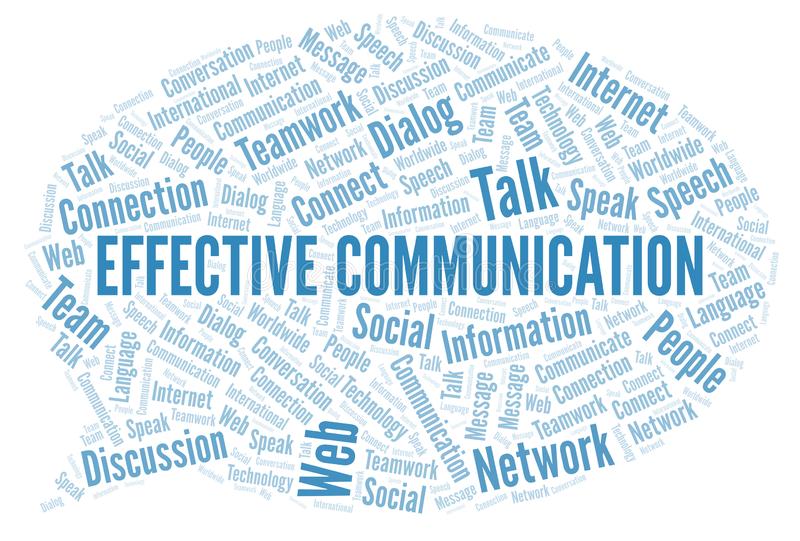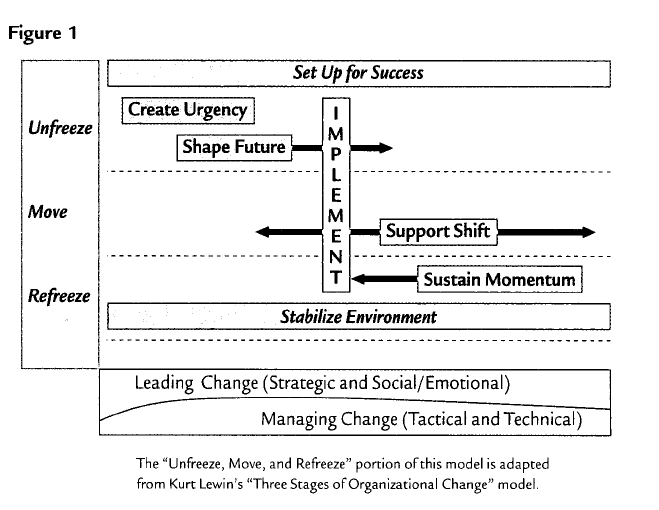Managing and Organizing People
In today’s work environment leaders must be cognizant about “what” and “how” they deliver information through different modes of communication. The act of communicating is not limited to a simple conversation; it has been transformed by both technology and the global reach of industry. Information sharing is vital in business, this paper will explore what effective communication is and the impacts it has on both the business and its employees.
Click the link to view / download this white paper: Effective Communication
Abstract:
Communication has been a tool used throughout the existence of man in one way, shape, or form. It is defined as “an act or instance of transmitting: a verbal or written message: a process by which information is exchanged between individuals through a common system of symbols, signs, or behavior” (2010) according to Merriam-Webster’s online dictionary. According to BNET Business Dictionary, corporate communication is defined as “the activities undertaken by an organization to communicate both internally with employees and externally with existing and prospective customers and the wider public” (retrieved on 20 May 2010). In the business world, communication(s) is the lifeblood of an organization and the transfer of information (data or verbal) can both energize and cripple a business depending on the delivery.

The information-sharing or communication has to be crafted in a way to which the intended receiver hears the correct message the transmitter is conveying. Due to the impact or implications of communications strategy is often used when crafting a message. Strategies are ways of pursuing the vision and mission (Gill, 2003). There are two types of corporate communications: Strategic Policy Deployment and Change Management. Strategic Policy Deployment can be broken into two elements: Strategic Planning and Policy Deployment.
Strategy:
Strategic Planning: “The process of developing and maintaining a strategic fit between the organization’s goals and capabilities and its changing marketing opportunities. It involves defining a clear company mission, setting supporting objectives, designing a sound business portfolio, and coordinating functional strategies” (Luftig, 1998).
Policy Deployment: “Integrating an organization’s strategic and business plans with its vision, mission, value proposition, core competencies, and each individual’s annual work plan” (Luftig, 1998).
Planning of a strategic Action plan which Thompson, Strickland, and Gamble suggests as follows: “Strategic Vision and Mission, Strategic Objectives, Both long and short term, Financial obligations, both short and long term, Overall business strategy, Supporting Functional Strategies to include Production, marketing/sales, finance, and HR. and Recommended Actions to improve company performance, to include Immediate and longer-range” (p. 264, 2008)
Strategy is vital to a company’s ability to survive in this highly competitive global market place. Why Strategic Policy Deployment? This is the highest level of planning and communicating a business will engage in to set the vision for the corporation going forward.
How important is the delivery of communication? According to Wikipedia the All channel Network communications style “which is an elaboration of Bavelas’s Circle used by Guetzkow, is analogous to the free-flow of communication in a group that encourages all of its members to become involved in group decision processes” (p1, 2009). This is encouraged throughout the business because it ensures that communication is freely assed and ideas and concerns are noted accordingly and swiftly. Global businesses are comprised of hundreds of industry professionals who know their business(s) and have to interact freely across the business(s) due to changes in the market, regulations, and compliance changes that span the globe.
Change Management:
Change management is a necessary but difficult process within an organization. It may be as the result of a leadership change, policy change(s) and change in ownership…etc. The change management transition can be very difficult for the company, leadership, middle management, and employees. Everyone throughout the organization has some type of “skin” in the process and the ability of the leadership to craft and deliver the communication can by what de-escalates a possibly volatile situation.

According to Eric Carter “…Change management methodologies contains seven phases: set up for success, create urgency, shape future, implement, support shift, sustain momentum, and stabilize environment” (p23, 2008). He feels that the process can be successful if one is diligent and follows the seven phases.
These phases were created through “some of the best practices of existing change management methodologies and implementation experience” (p20).
Types of Communication:
In most cases daily, weekly, monthly, and quarterly communications are held to ensure information is being disseminated and understood. These occur through email, conference calls, online discussions, and media conference meetings. Participation in these meetings is critical to the business and its ability to communicate effectively. Technology is vital to an organization both in regard to information sharing but also in customer service programs and interfacing with other business units. Regarding Virtual Teams and meetings it becomes critical to have a robust system. According to Nemiro “One of the most crucial reasons for organizations to promote creativity has been global competition” (2004) this is why communication(s) is a hallmark of business both with customers and within the business itself.
Duarte and Snyder state “The use of virtual teams expands the opportunities to leverage expertise from wherever it resides to develop products and services that have a competitive advantage” (p.6, 2006). Businesses communicate through global virtual teams which are incorporated into the business model to continue to learn and pass information to leverage our success in the global marketplace. Technologies are also necessary to accommodate the massive databases, protect the information, link intranet across the globe, email, and other systems to manage the business and its process. This is especially true today with the introduction of viruses (Covid-19) it has become essential to use tools such as Skype and Microsoft Teams to conduct business and communicate.
How to Communicate the Message:
There are many different levels of leadership, management, divisions, plants, business units, and sections for which communication is delivered. In terms of strategic delivery, the executive leadership usually makes a broad and general overarching message to the company on the global level. As the message is received and broken down to the individual business units it becomes more specific and the impact(s) are more prevalent. How it is delivered and by who is an indicator of how managers view the information. If it is communicated poorly the audience will react accordingly and issues in the workforce can arise. Paul Templin suggests that a “manager can’t change the reality of the organization change but can try to mitigate its impact in small ways. Sometimes this is as simple as offering to act as a reference for a job application or helping individuals define their own skillset. As such, the more effectively the individual manager conveys the personal touch, the empathetic touch, the less disruption ensues” (p 20, 2009). By this, he is stating that the message himself is not the main factor but how he/she empathizes and puts out a hand of support could help de-escalate the situation. Some people see things in black and white but the closer one is to the employees the more tact and care is required in crafting and delivering a message.
In “Leading Change”, Linda and Dean Anderson state how important is it to communicate. They offered this statement which is in line with Templin’s ideas “Ensure stakeholders see how change will impact different groups. Communicating to employees—in their own terms—the relevance and meaning of each change” (p. 3, 2009). Communicate personally is the preferred method, not through email, memos, monthly newsletters, or other non-personalized methods. People’s reactions may still be difficult to manage, but the manager can mitigate the effects and help others to understand, only through personal interaction will this occur. I recall hearing about communication through the grapevine and by the time it reached our business unit people were upset because they felt management was holding the information from them. The timing of the communication is also important. A large-scale communication with implications has to be delivered to the business as soon as possible. Everyone must be communicated to within hours of each other or people begin to believe they are being neglected.
Conclusion:
Communication is an important tool; this tool has the power to be constructive or destructive. How and who communicates the message and the strategy around the communication is vital to an organization. Templin states “…the more effectively the individual manager conveys the personal touch, the empathetic touch, the less disruption ensues” (p.20). Not all communication(s) is negative, but they can all be perceived as being negative depending on the way it is delivered, who delivers it, and when it is delivered. Eric Carter illustrates how one important aspect of business can be mitigated by using the following phrases “…. set up for success, create urgency, shape future, implement, support shift, sustain momentum, and stabilize environment” (p23, 2008). Using these phrases as tools can help in the delivery of communication and can help ensure a beneficial session with minimal issues. As small companies grow, so does the need for stronger communication and delivery methods which will ensure they (employees) understand the “why” of the message. Communication is one of the most important tools in a business, without it companies can fail. Using tools such as Microsoft Teams and Skype have proven useful in communicating during this global pandemic, the message remains the same, how and who delivers a message are the keys to the success of the dialogue.
References
Anderson, L., & Anderson, D. (2009). Leading Change. Leadership Excellence, 26(11), 3-4. Retrieved from Business Source Complete database.
Communication. (2010). In Merriam-Webster Online Dictionary. Retrieved Dec 01, 2020, from
webster.com/dictionary/communication
Carter, E. (2008). Successful Change Requires More Than Change Management. Journal for Quality & Participation, 31(1), 20-23. Retrieved from Academic Search Premier database.
Corporate Communication (2010). BNET Business Dictionary. Retrieved Dec 01, 2020, from https://dictionary.bnet.com/definition/Corporate+Communication.html
Duarte D. & Snyder N. (2006). Mastering Virtual Teams, strategies, tools, and techniques that succeed. Jossey-Bass. San Francisco, CA.
Gill, R, “Change Management or Change Leadership?” Journal of Change Management, Vol. 3 (4), pp. 307-318.
Nemiro J. (2004). Creativity in Virtual Teams. Pfeiffer. San Francisco CA.
Robbins. S, (2008). How to Communicate Layoffs. Harvard Management Update. Retrieved on Dec 01, 2020.
The ROI Alliance, LLC (2010). Strategic Planning and Policy Deployment. Retrieved on May 20, 2010, from https://www.roi-ally.com/sp_pd.htm
Wikipedia (n.d.), Porters Generic Strategies. Retrieved on Dec 01, 2020,. https://en.wikipedia.org/wiki/Porter_generic_strategies#Focus_Strategy
Thompson, Strickland and Gamble (2008). Crafting and Executing Strategy. McGraw/Hill Companies, New York
Templin, Paul (2009). Preparing people for change. Industrial Engineer: IE, 41(11), 20. Retrieved from Academic Search Premier database on Dec 01, 2020.




